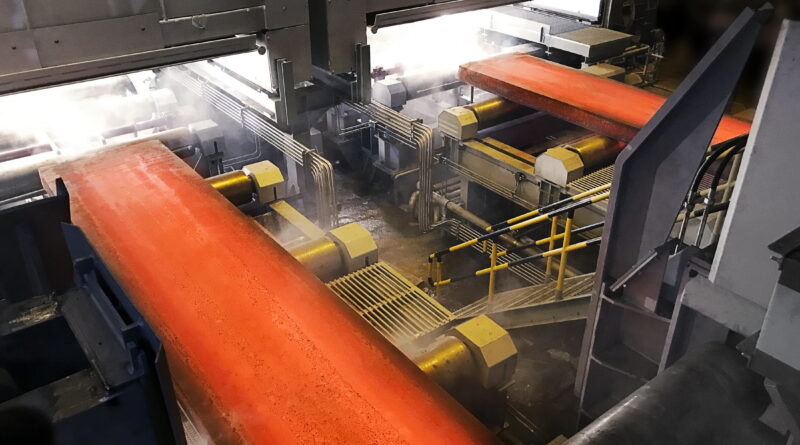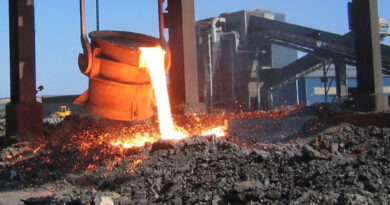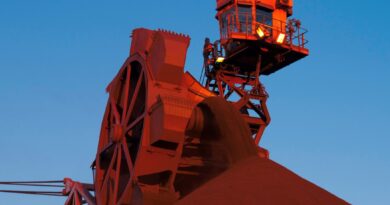Short range outlook for global steelmaking
The World Steel Association (worldsteel) has released an update to its Short Range Outlook (SRO) for 2020 and 2021. This SRO is showing a much more optimistic outlook than the previous SRO finalised in June. While still showing a decline in demand for 2020, it is a much smaller decline than previously expected.
In 2020, worldsteel forecasts that steel demand will contract by -2.4%, dropping to 1,725.1 Mt due to the COVID-19 pandemic. In 2021 steel demand is expected to recover to 1,795.1 Mt, an increase of 4.1 % over 2020.
A strong recovery in China will mitigate the reduction in global steel demand this year. The post lockdown recovery in steel demand in the rest of the world has been stronger than was earlier expected, but it still marks a deep contraction in 2020, both from developed and emerging economies, with only a partial recovery expected in 2021.
The forecast assumes that despite the current resurgence in infections in many parts of the world, nationwide lockdowns will not be repeated. Instead, selective and targeted measures will be able to contain this second wave.
Commenting on the outlook, Mr Al Remeithi, Chairman of the worldsteel Economics Committee, said, “the global steel industry passed the lowest demand point for this year in April and has been recovering since mid-May. However, the recovery is uneven across countries depending on their success in containing the virus, the national industry structure, and finally economic support measures. China has shown a surprisingly resilient rebound contributing to a major upward revision of the global growth forecast for 2020. In the rest of the world, we will see a sharp contraction of steel demand, both in developed and developing economies. This crisis has been particularly challenging for developing economies as they continue to struggle with the uncontrolled virus, low commodity prices and falls in exports and tourism. The pandemic has accelerated megatrends which have been slowly transforming both our and our customers’ industries, leading to a lasting impact far greater than short term demand consequences.”
BACKGROUND TO THE FORECAST
Since the reopening of most economies in mid-May, pent-up demand initiated a strong rebound of economic activities, suggesting a V-shaped recovery. However, to date, this has not been enough to offset the drop during the lockdown. Many steel-using sectors remain below their pre-COVID-19 level.
A recovery from the pandemic remains fragile due to the second wave of infections, continued social distancing measures, elevated unemployment and weak confidence allied with increasing concern on the timing of a demand recovery.
On the positive side, health systems are in a much better shape to tackle the pandemic now due to the lessons learnt from the first wave. A careful balance between containing the virus and maintaining the viability of economies is being widely sought.
Added to this in the northern hemisphere there is uncertainty over how COVID-19 will evolve during the upcoming flu season which may have a serious impact on the outlook for 2021. The risk is tilted toward the downside. A W-shaped recovery cannot be ruled out and a full recovery in 2021 is unlikely.
1. CHINA
China’s strong recovery since late February, which continues at a steady pace, suggests positive GDP growth in 2020 despite a -6.8% contraction in the first quarter.
During January-August, investment in real estate was up 4.6% y-o-y, and infrastructure investment recovered to the level of last year. In August, the mechanical machinery and automotive sectors showed a y-o-y growth of 10.9% and 7.6% respectively.
As a result the mechanical machinery sector’s output during January-August surpassed that of 2019 (+1.2%), while automotive production is still 9% below the 2019 level. With retail sales also catching up in August, the Chinese economy is rapidly approaching full normality.
China’s steel demand is expected to increase by 8% in 2020, aided by government infrastructure stimulus and a strong property market. In 2021, steel demand is expected to stay flat as a result of the following two forces.
First, the infrastructure and housing projects initiated in 2020 will continue to support steel demand in 2021. On the other hand if the economy shows a full recovery the government is likely to reverse its stimulus policy to cool down the construction sector. Given the outlook for a weak global economy in 2021, the manufacturing sector’s rebound will be limited.
2. ADVANCED ECONOMIES
Manufacturing in the developed economies, which was only just beginning to recover from the slowdown in late 2019, was pushed back again by the pandemic. Even with a strong bounce back after the economies reopened, which has closed the gap with pre-pandemic levels, double-digit contraction over the whole year still seems unavoidable.
In the US, recovery from the lockdown has been strong, aided by substantial government support measures. The manufacturing downturn was shorter and less acute than expected. However, the US is still struggling to control the virus’s spread, and the recovery momentum might taper off in the coming months. The outlook for 2021 is less optimistic, with a subdued outlook for construction and auto production.
In Europe, the negative economic impact of COVID-19 was softened by strong social security schemes and fiscal stimulus. The post lockdown recovery in the EU is turning out to be stronger than expected, but the deep contraction of major steel using sectors, especially automotive, will contribute to a double-digit contraction in 2020 The contraction was particularly pronounced in Italy and Spain.
In Japan and South Korea, despite relatively successful management of the virus with less severe containment measures, steel demand will see a substantial contraction in 2020 with limited recovery next year due to falling exports and weak confidence.
Overall steel demand in the developed economies is expected to fall by -14.9% in 2020 and increase by 7.9% in 2021.
The COVID-19 pandemic will exert a less severe impact on steel demand in the developed economies than the global financial crisis, bearing in mind that at the beginning of the pandemic, steel demand had not yet fully recovered from the 2008/9 crisis.
3. DEVELOPING ECONOMIES EXCLUDING CHINA
Generally the emerging economies have been less well equipped to absorb the pandemic shock, and the impact has been uneven, depending on the economic structure and the severity of the containment measures required.
The impact has included rapidly falling domestic demand, the collapse of exports and commodity prices, and a free fall in tourism with no immediate recovery being seen. A double-digit fall in steel demand is expected in 2020 for the major emerging economies.
India and Brazil have suffered most from a failure to effectively control the virus. India, where one of the most severe lockdowns in the world was implemented, is expected to see the deepest decline in steel demand in decades. However, a relatively fast recovery should take place in 2021, supported by rural consumption and government investment in infrastructure.
In Latin America the impact has been high across the continent due to its structural problems and poor crisis management. The resulting interruption in reforms and deterioration of the region’s social stability suggest a slow recovery in 2021.
In ASEAN, while some countries fared well and needed less stringent lockdowns, Malaysia and the Philippines were severely affected. Vietnam will see positive growth in steel demand due to the successful containment of the virus.
The MENA region was also severely hit by the dual shock of the pandemic and falling oil prices.
In 2021, the recovery of steel demand in the developing economies is expected to be less than full but faster than the developed economies, driven by infrastructure investment. Steel demand in the emerging economies, excluding China, is expected to fall by -12.3% in 2020 and recover by 10.6% in 2021.




